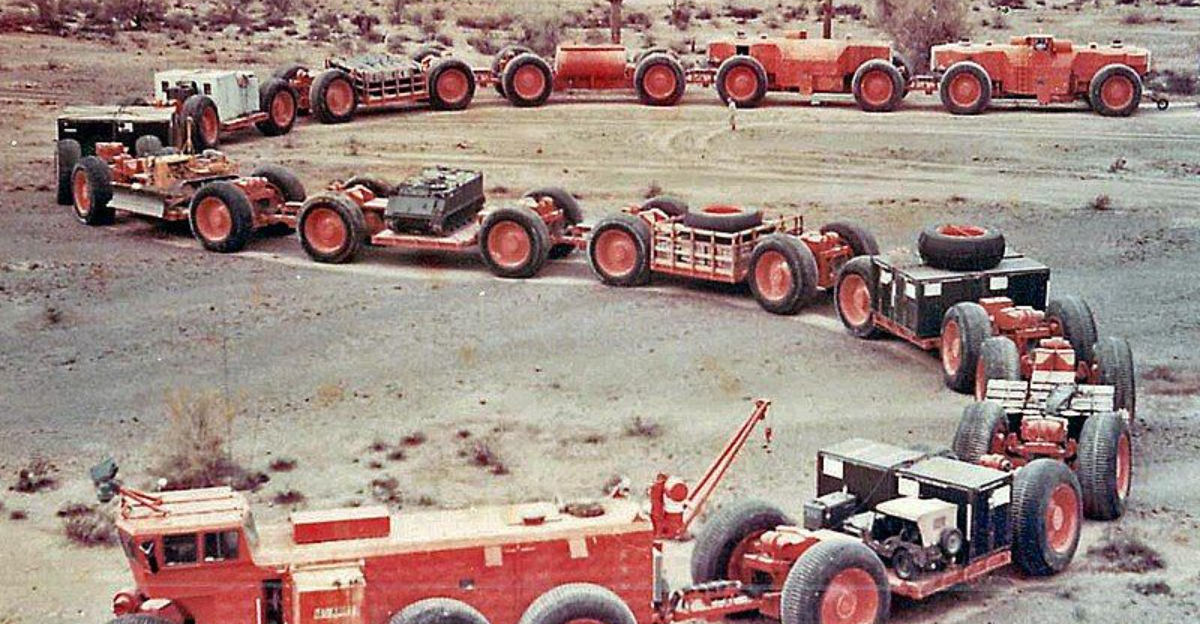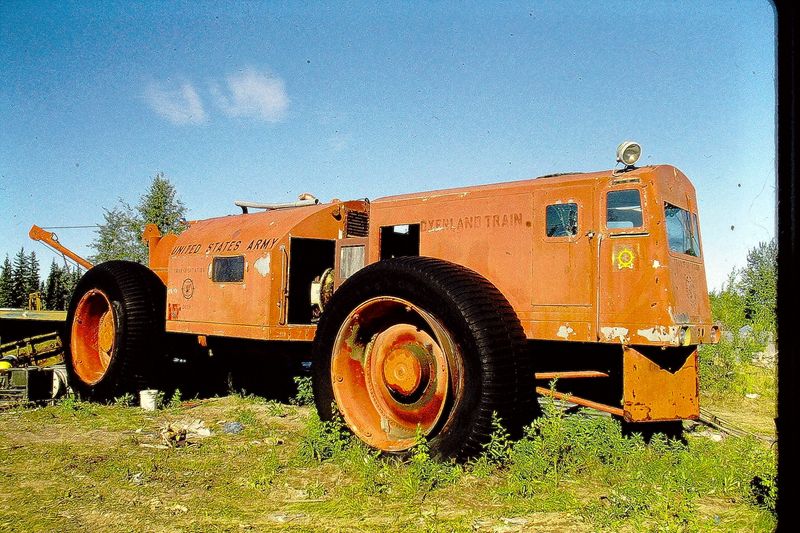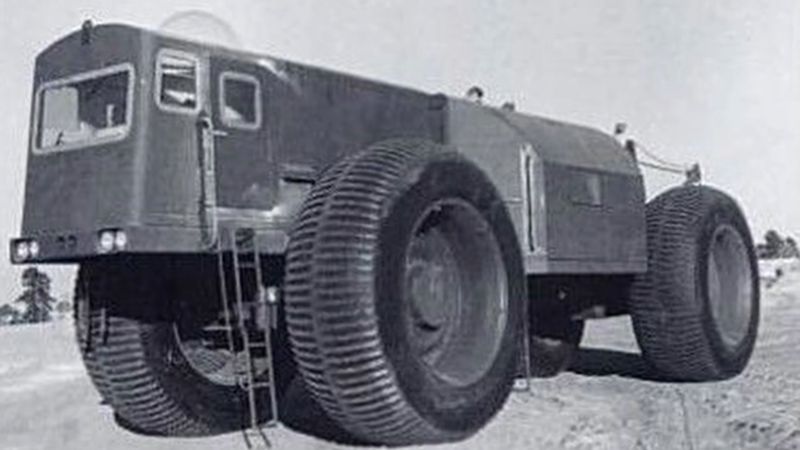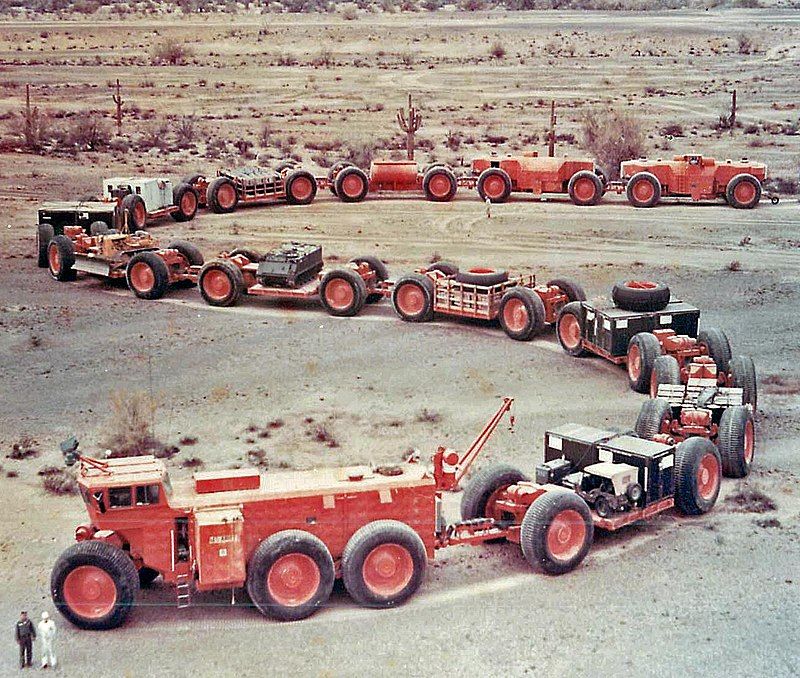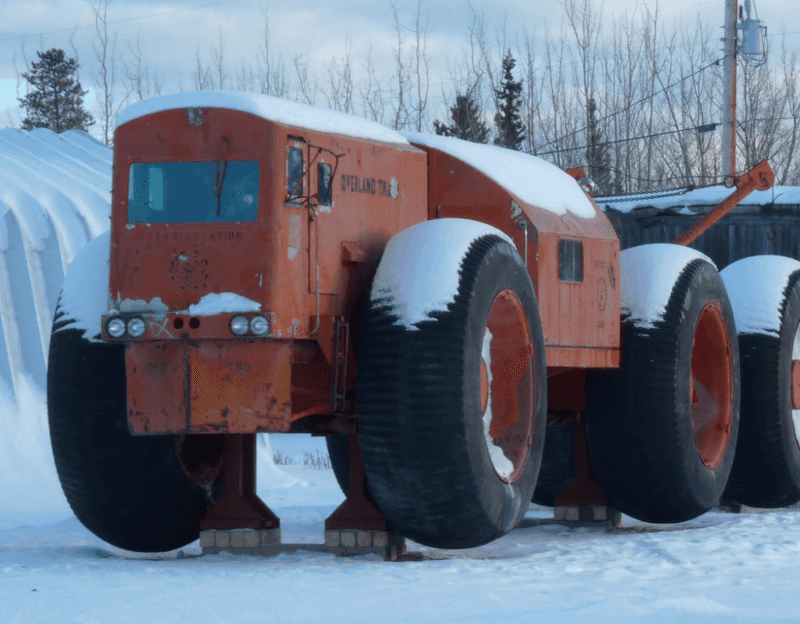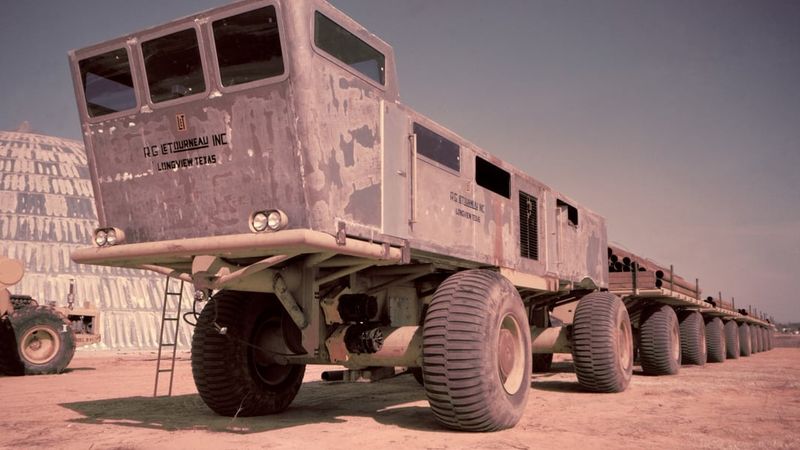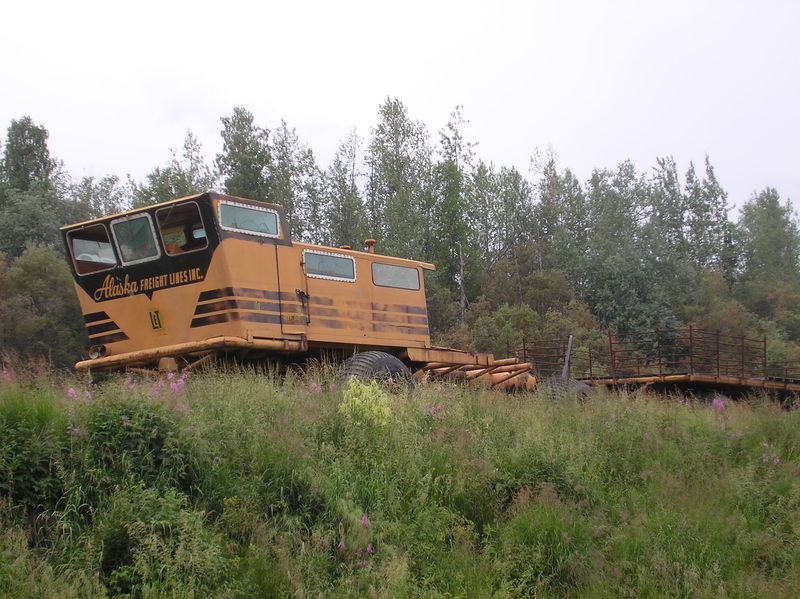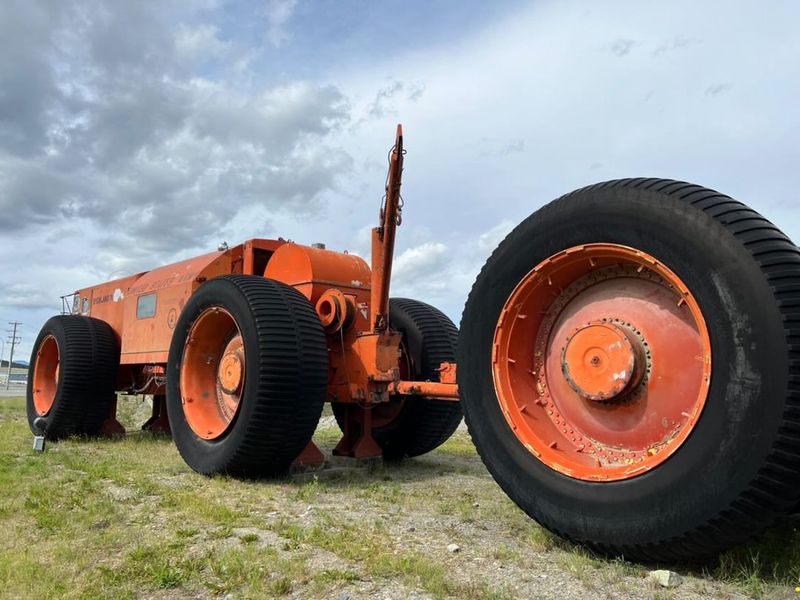The LeTourneau “Sno-Train” was an engineering marvel built by LeTourneau for the U.S. Army during the Cold War. Designed to traverse the challenging Arctic terrain, this unique vehicle was equipped with an electric-drive system where each wheel was powered individually.
This innovative approach allowed it to carry heavy loads across snow and ice, making it an essential tool for exploration in regions without roads.
Featuring crew accommodations and storage modules, this mobile outpost braved the harsh environments of Alaska and Canada. Today, a portion of this incredible vehicle rests at the Yukon Transportation Museum.
1. Engineering Marvel: LeTourneau’s Creation
The LeTourneau Sno-Train was an engineering marvel constructed during the Cold War for Arctic exploration. This vehicle was equipped with an innovative electric-drive system, where each wheel was powered individually by diesel-electric motors.
Such technology is comparable to modern trains and mining trucks. Its design allowed it to carry significant loads over snow and ice, overcoming the absence of traditional roads.
With crew accommodations, storage, and workshops on board, it transformed into a mobile outpost. Engineers of the era marveled at its capabilities, setting a new standard for vehicular design in extreme environments.
2. Innovative Electric-Drive System
The Sno-Train’s electric-drive system was groundbreaking. Diesel-electric motors powered each wheel independently, a concept better known in trains and large mining vehicles.
This design provided the train with exceptional traction and flexibility, essential for Arctic conditions. The system’s efficiency allowed the Sno-Train to maneuver across snow and ice effectively, a feat unmatched by conventional vehicles of its time.
Engineers appreciated the reliability and power it offered, making it a key player in Arctic exploration. This innovation remains a benchmark for modern vehicle engineering in extreme conditions.
3. Designed for Arctic Terrain
Built to brave the harsh Arctic environment, the Sno-Train was a lifeline in the wilderness. Its robust construction enabled it to transport heavy loads over challenging terrains where no roads existed.
The vehicle’s resilience was tested in regions like Alaska and Canada, proving its capability in real-world conditions. Its design addressed the unique needs of Arctic transport, offering a mobile solution for military and scientific expeditions.
By overcoming natural barriers, the Sno-Train played a pivotal role in advancing Cold War-era exploration beyond conventional limits.
4. Mobile Outpost in Extreme Environments
The Sno-Train was more than just a transport vehicle; it was a mobile outpost. Designed with crew accommodations, storage modules, and workshops, it supported extended missions in the Arctic.
This capability made it invaluable for both military and scientific explorations. Crews could live and work inside the train, sheltered from the harsh elements outside. It provided all necessary amenities for survival and operation, ensuring expeditions could continue without interruption.
This self-sufficiency was crucial for the success of missions in remote and unforgiving landscapes.
5. Testing in Arctic Conditions
Testing the Sno-Train in Arctic-like conditions was vital to ensure its performance and reliability. Trials were conducted in regions like Alaska and Canada, where the vehicle faced the challenges of snow, ice, and freezing temperatures.
The tests confirmed its ability to operate effectively in extreme environments, a key factor for its intended military use. Engineers closely monitored these trials, noting the train’s capabilities and areas for improvement.
This thorough testing phase was essential to validate its design and readiness for cold-weather operations, ultimately cementing its legacy in Arctic transport.
6. The Unique Prototype: Overland Train VC-22 Sno-Freighter
The LeTourneau Overland Train VC-22 Sno-Freighter was a unique prototype, standing as a testament to innovation. It was the only one of its kind built and operated during the era.
This prototype demonstrated the possibilities of large-scale Arctic transport, featuring a design capable of carrying heavy loads over vast snowy expanses. Its existence paved the way for future developments in overland transport vehicles.
Although no others were built, the VC-22 Sno-Freighter remains a symbol of technological advancement and an example of pioneering spirit in the realm of Arctic exploration.
7. Preservation at Yukon Transportation Museum
A portion of the legendary Sno-Train can now be seen at the Yukon Transportation Museum in Whitehorse, Canada. This includes the lead vehicle, known as the “snow tractor,” which stands as a relic of its adventurous past.
Visitors to the museum can explore this historical piece, gaining insight into its construction and operations. Informational plaques provide context and history, making it an educational experience.
The preservation of this vehicle allows people to connect with a significant piece of Arctic exploration history, ensuring its story continues to inspire future generations.
